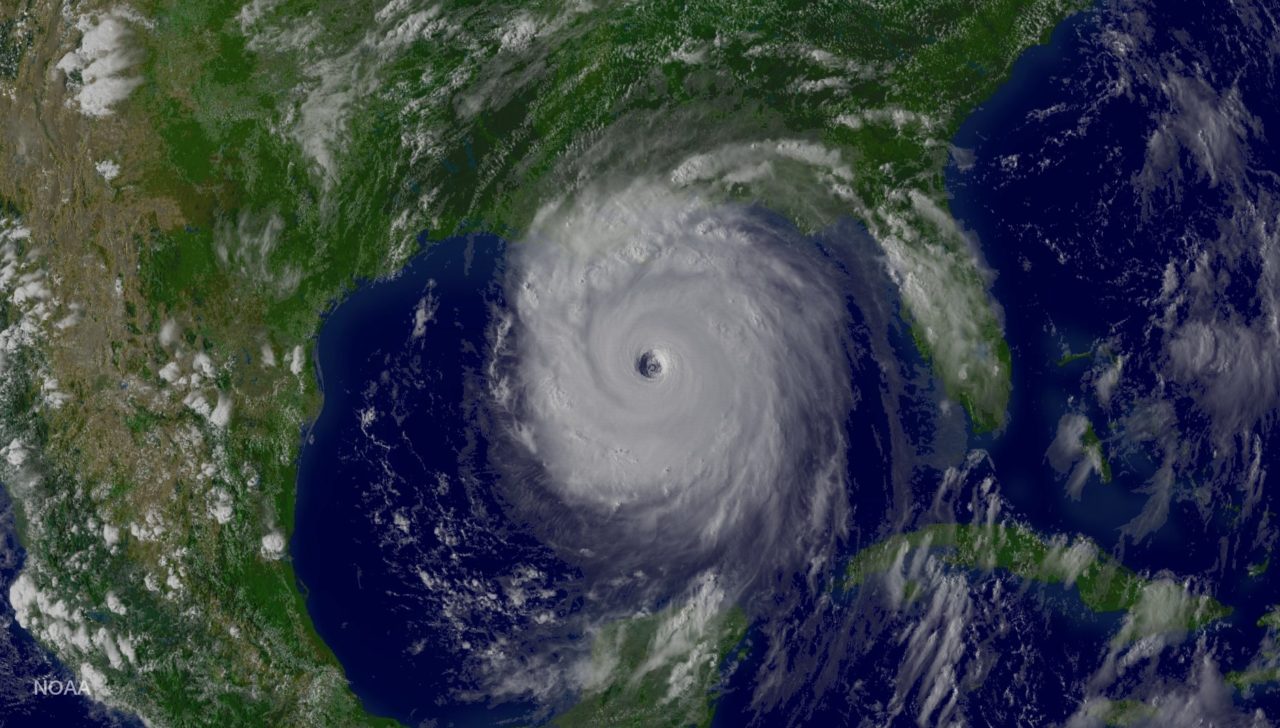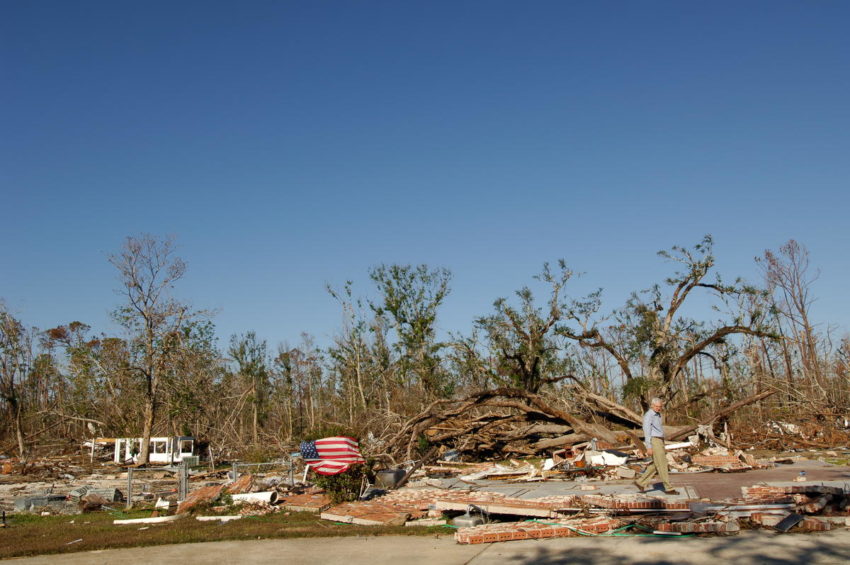Hurricane Katrina, a destructive storm in 2005, resulted in more than 1,390 deaths along the U.S. Gulf Coast. Its relentless winds and unprecedented storm surge caused extensive devastation, with New Orleans suffering from catastrophic flooding due to breached levees. Regarded as one of the worst disasters in U.S. history, Hurricane Katrina inflicted an estimated $125 billion in damages, marking it as one of the costliest hurricanes recorded in the nation.
Hurricane Katrina: Facts, FAQs, and how to help
Explore Hurricane Katrina facts and frequently asked questions. Learn how you can help families impacted by hurricanes and other disasters in the U.S.
- Fast facts: 2005 Hurricane Katrina
- How did Hurricane Katrina develop?
- When was Hurricane Katrina, and where did it hit?
- What category was Hurricane Katrina?
- How did World Vision respond to Hurricane Katrina?
- How can I help people affected by disasters in the U.S.?
Fast facts: 2005 Hurricane Katrina
- Hurricane Katrina struck the Gulf Coast of the United States on August 29, 2005, as a Category 3 hurricane.
- The hurricane’s powerful winds and storm surge caused massive destruction along the coasts of Louisiana, Mississippi, and Alabama.
- The failure of levees in New Orleans led to catastrophic flooding, with approximately 80% of the city submerged. Hurricane Katrina resulted in over 1,390 deaths, making it one of the deadliest hurricanes in U.S. history.
- Hundreds of thousands of people were displaced from their homes due to the hurricane and subsequent flooding, leading to one of the largest internal displacements in U.S. history.
- The economic cost of Hurricane Katrina’s damage was estimated to be approximately $125 billion, making it one of the costliest natural disasters in U.S. history.
How did Hurricane Katrina develop?
Hurricane Katrina originated as a tropical depression over the southeastern Bahamas, marked by a cluster of loosely connected thunderstorms. The tropical depression strengthened and its circular motion became more organized. It progressed to become a tropical storm, characterized by wind speeds ranging from 39 to 73 mph. As it approached Florida, the wind speeds intensified, surpassing 74 mph, which elevated Hurricane Katrina to a Category 1 hurricane.
When was Hurricane Katrina, and where did it hit?
Hurricane Katrina first made landfall in Florida on August 25, 2005, initially as a hurricane and later weakened to a tropical storm while passing over land. It regained strength as it moved northwest through the Gulf of Mexico. On August 29, 2005, Hurricane Katrina made its major landfall on the Gulf Coast, near the town of Buras in southeast Louisiana. It continued moving north along the Louisiana coast and later made a second landfall at the mouth of the Pearl River, at the border of Louisiana and Mississippi.

What category was Hurricane Katrina?
Hurricane Katrina intensified to a Category 5 in the Gulf of Mexico, weakening slightly before making landfall on August 29, 2005. It struck the Gulf Coast as a Category 3 hurricane.
How did World Vision respond to Hurricane Katrina?
In the aftermath of Hurricane Katrina’s devastating impact, World Vision swiftly initiated a comprehensive response to provide aid and support to those affected. Here’s how World Vision’s response unfolded:
- Immediate emergency relief: Within 48 hours of the hurricane’s landfall, World Vision delivered emergency supplies to the severely impacted communities in Louisiana and Mississippi. We worked tirelessly to deliver essential items to people affected by the disaster.
- Aid to evacuated families: World Vision quickly extended assistance to families who had evacuated to Texas, providing over $500,000 in grants alongside vital essentials and supplies. We distributed personal hygiene items, bedding, clothes, toys, and cleaning supplies to affected families.
- Collaboration with local entities: To ensure targeted aid reached the most vulnerable, World Vision collaborated with local churches, schools, and community organizations. These partnerships allowed for efficient support distribution and maximized the impact of relief efforts.
- Three-phase response plan: World Vision outlined a comprehensive three-phase response plan, spanning emergency relief, recovery, and rebuilding over three years. This approach addressed both immediate needs and the long-term recovery of affected communities.
- Resource storehouse establishment: In February 2006, World Vision opened a 40,000-square-foot storehouse in Picayune, Mississippi, to facilitate sustained support throughout the recovery process.
- Achievements of World Vision’s response to Hurricane Katrina:
- Reached 318,890 people affected by the disaster.
- Delivered relief supplies, cash grants, and materials totaling $15.6 million.
- Supported 165 churches and faith-based organizations in their efforts to aid survivors.
- Distributed $6.2 million in cash grants to churches and faith-based organizations.
- Provided $500,000 in cash grants to 500 evacuated families.
- Equipped 41,600 students with essential school classroom supplies.
- Supplied 21,000 backpacks filled with school supplies.
- Offered gift-in-kind products to 253 partner organizations in 2006, expanding to 335 partners in 2007 and 2008.
How can I help people affected by disasters in the U.S.?
- Pray: Join us in praying for U.S. children and families impacted by disasters or in need.
- Give: Your gift will provide life-saving aid to families in the U.S. following disasters.
Sevil Omer and Andrea Peer of World Vision’s U.S. staff contributed to this article.


